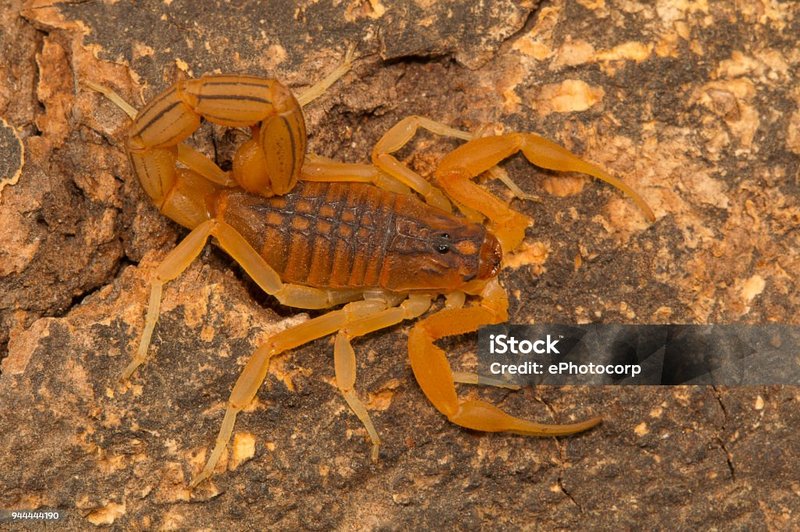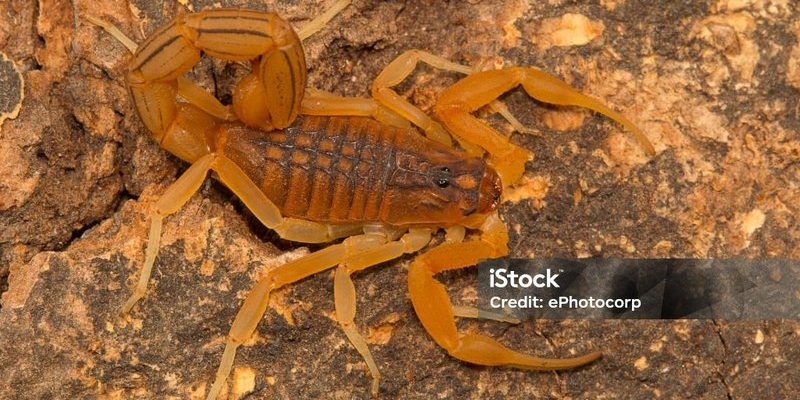
Identifying a fat-tailed scorpion can be a little tricky. They sport unique features that set them apart from their more harmless cousins. If you’re curious about how to spot one of these guys in the wild or even in pet stores, you’re in the right place. Together, we’ll dive into their distinct characteristics, habitats, and behavior. By the end, you’ll be able to identify a fat-tailed scorpion like a seasoned pro.
What Does a Fat-Tailed Scorpion Look Like?
Let’s start with the basics. The fat-tailed scorpion is part of the *Buthidae* family, and you can immediately recognize this species by its stout body and thick tail. They typically grow to be around 4 to 6 inches long, but some can even reach up to 7 inches.
One of the telltale signs is their robust tail, which is thicker than that of other scorpion species. This tail isn’t just for show; it houses a potent venom. You might notice that their body appears a bit shiny, often with a dark brown or black hue. Depending on the specific species, you might even spot some lighter markings.
When observing the scorpion from above, you’ll see that it has large pincers which are quite disproportionate compared to their body size. This gives them an intimidating appearance. If you can, try to glimpse its stinger—it’s often held high and ready to defend itself.
Where Do Fat-Tailed Scorpions Live?
Fat-tailed scorpions are known for their adaptability to various environments. You’ll commonly find them in arid or semi-arid regions, including parts of Africa, the Middle East, and southwestern Asia. Their natural habitat is often rocky terrains, deserts, or forests.
These scorpions are notorious for hiding among rocks or under loose soil during the day to escape the heat. If you’re looking to spot one, consider checking around the bark of trees or even inside burrows—they can be masters of camouflage.
Interestingly, they thrive in urban areas too. Sometimes, they can end up in basements or gardens, especially if there are places to hide. This adaptability makes it essential to know how to identify them, just in case they wander into your backyard.
Behavior and Habits of Fat-Tailed Scorpions
You might be wondering how fat-tailed scorpions behave in their natural habitat. One of their standout traits is their nocturnal lifestyle, meaning they’re active at night. During the day, they prefer to seek shelter to avoid heat and predators.
When night falls, these creatures emerge to hunt. Their diet mainly consists of insects, but they aren’t picky eaters. They’ll take down small rodents or even other scorpions if the opportunity arises. They use their large pincers to grasp prey while the stinger remains poised to inject venom.
But here’s something fascinating: unlike many scorpions that rely on speed, fat-tailed scorpions tend to be ambush predators. They lie in wait, ready to strike at the first sign of movement—a tactic that can be pretty effective.
The Venom of the Fat-Tailed Scorpion
Let’s talk about what really makes fat-tailed scorpions infamous: their venom. Their venom is among the most toxic of any scorpion species. It contains neurotoxins that can cause severe reactions in humans.
When bitten, a person may experience symptoms like intense pain, swelling, and in some cases, even more severe reactions such as difficulty breathing or heart complications. This isn’t something to take lightly! If you suspect a fat-tailed scorpion sting, seeking medical attention is critical.
That said, these scorpions use their venom primarily for hunting and defense. Most people don’t have to worry about encountering one unless they’re in their natural habitat or handling them improperly. So, being cautious is key if you ever find yourself in their territory.
How to Safely Identify a Fat-Tailed Scorpion
If you’re keen on identifying a fat-tailed scorpion in the wild, there are some key steps to take. First and foremost: safety first! If you’re not experienced with scorpions, it’s best to observe from a distance.
1. Look for Size and Shape: As mentioned, these scorpions are larger and stockier compared to others. If you see a chunky scorpion, it could likely be a fat-tailed.
2. Observe the Tail: A thick, heavy tail is a major giveaway. This isn’t a scorpion you want to get too close to!
3. Note the Color: Watch for the shiny, dark coloration that sets them apart from lighter species.
4. Watch the Behavior: If it seems more aggressive or alert than other scorpions, take heed—this might be a fat-tailed.
5. Familiarize Yourself with Their Range: Knowing where fat-tailed scorpions are commonly found will help. Areas like deserts and rocky terrains are prime spots.
Differences Between Fat-Tailed Scorpions and Other Scorpions
Understanding how fat-tailed scorpions differ from other species can be incredibly useful. For instance, while many scorpions tend to be more slender or longer, fat-tailed scorpions are easily recognized by their stocky build.
In terms of venom, not all scorpions pose the same threat. Many species have venom that may cause mild discomfort. In contrast, fat-tailed scorpions are potent predators with venom capable of causing serious harm to humans.
Another difference lies in their habitat preferences. Some scorpions can thrive in lush environments, while fat-tailed scorpions prefer drier areas where they can hide and ambush prey. This adaptation is key to their survival.
Identifying the fat-tailed scorpion is more than just a fun fact—it’s important for safety. Knowing what to look for can help keep you safe if you’re in an area where these creatures are common.
Whether you’re a curious adventurer exploring the desert or simply someone interested in wildlife, understanding these scorpions will deepen your appreciation for nature. So next time someone mentions fat-tailed scorpions, you’ll not only know how to recognize them but also why they matter in the grand scheme of their ecosystems.
Stay alert, keep your distance, and enjoy the fascinating world of scorpions from afar!

